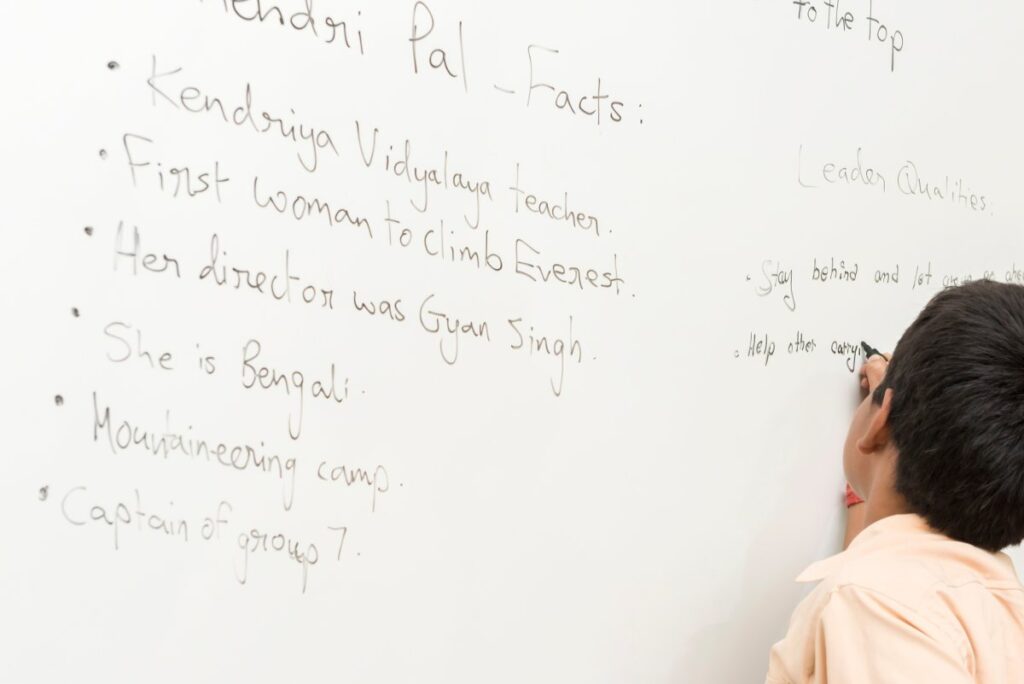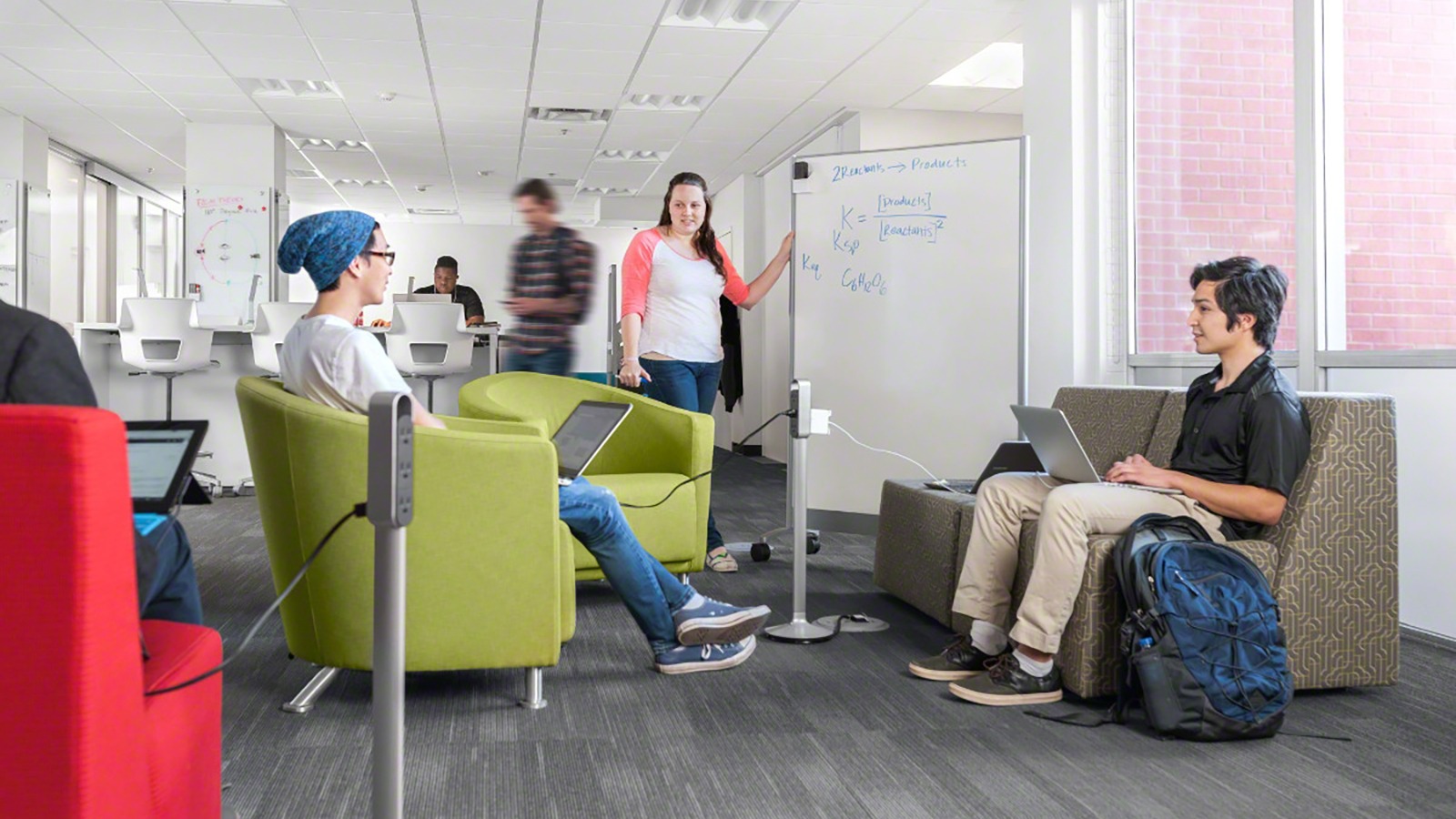There’s something magical about putting pen to paper. Writing seems to spark connections, creativity and collaboration in a way that, even in the midst of the technology revolution, typing on digital devices doesn’t touch. Maybe that’s because research shows writing in the digital age improves learning retention, can improve our mood and engages networks in our brains, such as the Reticular Activating System (RAS) which filters information and directs attention, that typing doesn’t.
Regardless of the reason, in a world saturated by smartphones, tablets and laptops, notebook sales are on the rise. A favorite among many, the Milan-based notebook producer Moleskine saw a double digit increase in sales in 2016. This begs the question, in the age of digital, why are writing surfaces still so valuable?
PolyVision talked with Bill Livengood, Director of Surface Sales to dig deeper into this question and learn more about the power of writing surfaces.
PV: Why in the age of digital is the physical act of writing so important?
BL: The physical act of writing engages the brain in important ways. Cognitive mapping indicates that the act of writing (forming words and images) engages the mind and senses in a different way than typing on a keyboard or electronic device. Writing helps stimulate creativity and retention. It is not a choice between digital or analog, but a combination of both that forms effective learning and collaborative environments.
PV: Do you think creativity and retention when writing are tied to the increase in notebook sales? Why do you think Millennials and Gen Z are increasingly going back to pen and paper?
BL: Absolutely! Millennials and Gen Z are driving this trend. This may seem counterintuitive since they grew up in the digital age, but there is something satisfying about going to a meeting and taking notes, or writing a “to-do” list and crossing off each task once it is completed. Using a whiteboard to share thoughts and ideas during a teaching or collaboration session provides an experience that technology cannot duplicate. That is why so many whiteboards are in classrooms, conference rooms, and boardrooms around the world.
PV: When most people think of vertical writing surfaces, they think of whiteboards. Why is this, and what other options are there out there for writing surfaces?
BL: Writing surfaces are part of our earliest learning experiences. Most classrooms, from kindergarten–12th grade to higher education, and corporate conference and training rooms use whiteboards. Some teachers still use a chalkboard, but most everyone in a traditional classroom settings uses a whiteboard as part of the learning experience.
A “whiteboard” is a generic term, and as with most products, there are multiple options. Typical options include boards composed of glass, painted steel, melamine and CeramicSteel.
PV: What are the top qualities someone should be looking for when selecting a writing surface?
BL: There are several factors to consider, but I’ll narrow it down to eight.
- Durability: the ability to withstand heavy use over time and resist wear, breaking and scratching
- Visibility: the ease with which the reader can read what is printed on the surface
- Writability: how smoothly a marker glides across the surface
- Erasability: how well the surface can be erased
- Magnetic: the capability to use magnets on the surface
- Projection: the ability to see projected images on the surface
- Value: the usefulness of the product to the user over an extended period
- Environmental Impact: the ability to be safely produced and used, recycled or composted, featuring an environmentally sound production process
PV: Talk to us more about visibility. How important of a factor is visibility in learning and collaborative environments?
BL: Visibility is a key factor to consider when choosing a writing surface. Some whiteboards are simply more visible than others. For example, look at the two images below. The same words are written on two different surfaces. The image on the left is a CeramicSteel whiteboard. The image on the right is a glass whiteboard. Notice the difference in the reader experience?
The text on the glass board is not as visible. The translucent nature of the surface is subject to reflection and glare causing distractions and potentially eyestrain to the user. Compare this to the image on the left. The CeramicSteel surface is clearly more visible and it is much easier for the observer to focus on the words rather than competing images caused by glare and reflections.
Think about a student in a classroom, or a member of a collaborative team involved in an all-day brainstorming session. Which surface would you want to look at for an extended period?
PV: If you had to pick the best writing surface, which one would it be and why?
BL: It is all about the user. If the qualities mentioned earlier are the most important factors to the user, CeramicSteel is the obvious choice. Yes, it’s my opinion, but it’s also backed by research. When you consider the lifetime warranty, the functionality of the product, combined with the factors mentioned earlier, CeramicSteel is clearly the best writing surface on the market today.
PV: Thanks, Bill! Very insightful.
BL: You’re welcome!



